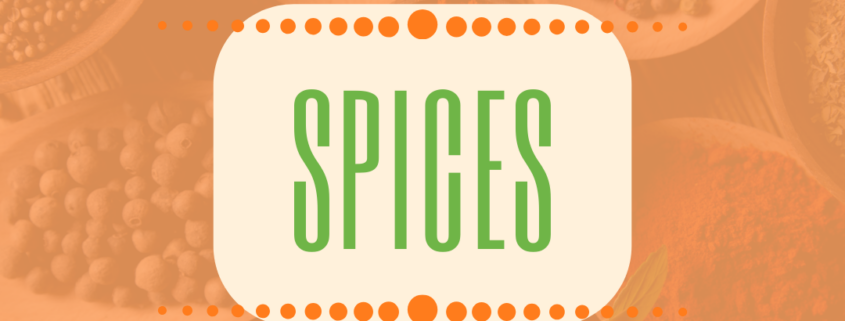What are Spices?
Written by Lori Bumbaco, MS, RDN, CSO, LDN, Oncology Dietitian
What are spices?
Spices grow in tropical areas and come from the bark, buds, fruit, roots, seeds, and stems of plants and trees. Some of the basic spices to keep on hand are cumin, paprika, cinnamon, nutmeg, and chili powder. We have plenty of other options to consider, and spices can be a fun way for us to be creative culinarians in the kitchen. Spices have a long history in our diet, they have been used for thousands of years in many ways. Besides adding flavor to foods and recipes, they helped preserve foods, and black pepper even represented currency for salaries.
According to McCormick, today’s home cook is likely to keep at least 40 different seasonings on hand, whereas the typical 1950’s American homemaker relied on fewer than 10 spices.
Are there nutritional benefits to spices?
Spices are plants, so they are key players in a cancer protective diet. They are all great sources of phytochemicals that help to lower cholesterol, prevent cell damage, reduce inflammation, and inhibit the growth of cancer cells. Scientists have not yet discovered if we need a specific amount of spices for health benefits but using them liberally is a great approach to support your health.
Turmeric, an Indian spice, contains potent antioxidants and anti-inflammatory properties that can counter cancer development. Turmeric is often used in various recipes such as vegetables, rice, meat, sauces, or dressings and adds flavor described as bitter & peppery. Turmeric may also help with joint pain and may exert anti-aging effects. Cinnamon offers a sweet flavor and may help with lowering our blood sugars. Rosemary is a spice commonly used in Mediterranean recipes such as tomato sauces & for dipping oil sauces as the spice is native to the Mediterranean region. Rosemary taste is described as a blend of peppery, sage, mint evergreen, and pine. When inhaled, it is associated with anti-inflammatory properties; it may lower cortisol levels and improve memory. Ginger has a combination taste of sweet, spicy, and savory. A very common effect ginger has is that it helps reduce nausea, especially in those receiving chemotherapy treatment. Ginger has many culinary options, such as adding tea, smoothies, rice recipes and sauces.
How can I use spices?
Be prepared and patient, this may take some trial and error in the kitchen. If you are concerned about an overwhelming flavor, start with small amounts, taste test, and add more as needed. Once you have mastered the basics, explore new flavors with curry powder, turmeric, clove, and bay leaf.
Whenever possible, buy spices in amounts that you can use within 12 months. To keep herbs and spices at their peak of flavor and nutritional potency steer clear of leaving spices next to the stove. To maintain freshness, try to keep spices away from heat, moisture and light. They are best stored in a cool, dark cupboard in airtight containers.
Ready to spice it up?
Sometimes spice blends sneak in a fair amount of salt. Try these salt-free seasoning blends. Combine ingredients and store in a tightly covered jar. Rub or sprinkle them on food for added flavor.
Mixed herb blend: Mix ¼ cup dried parsley flakes, 2 tablespoons dried tarragon, and 1 tablespoon each of dried oregano, dill weed, and celery flakes.
Italian blend: Mix 2 tablespoons each of dried basil and dried marjoram, 1 tablespoon each of garlic powder and dried oregano, and 2 teaspoons each of thyme, crushed dried rosemary, and crushed red pepper.
Mexican blend: Mix ¼ cup chili powder, 1 tablespoon each of ground cumin and onion powder, 1 teaspoon each of dried oregano, garlic powder, ground red pepper, and ½ teaspoon cinnamon.



